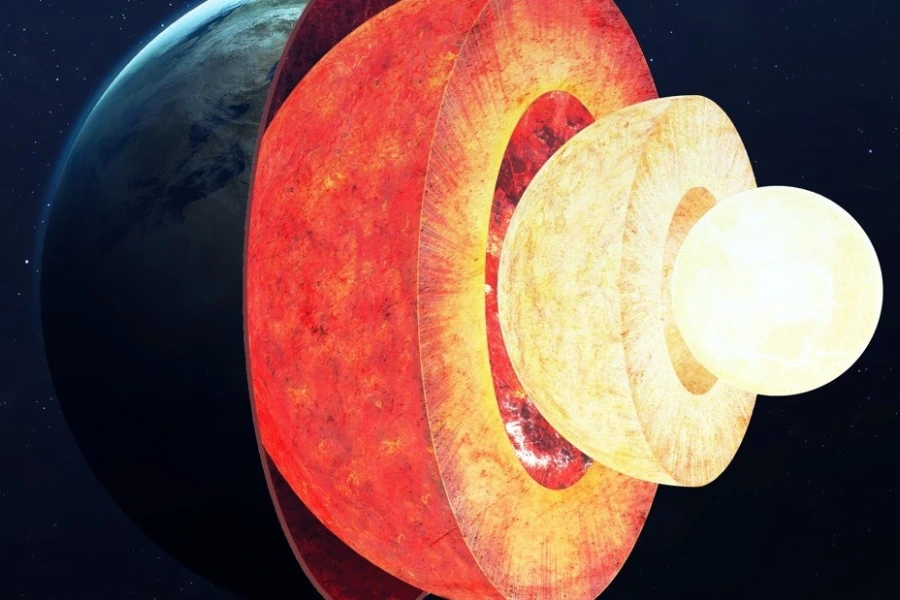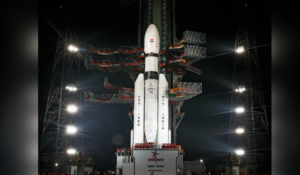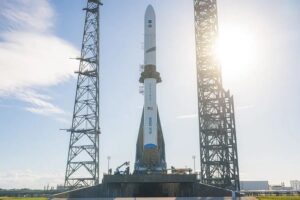
In a groundbreaking study funded by NASA, scientists have revealed surprising new information. It is about the crust of Venus, also known as Earth’s “hotter twin.” While the Earth’s crust is dynamic and formed by plate tectonics, Venus undergoes a fundamentally different geological process. Even with some similarities in size and composition. This discovery could change our understanding of rocky planets, in our solar system and beyond.
This discovery also illustrates how space investigation always catalyzes broader scientific and technological progress. For example, recent developments in India around planetary exploration and geosciences.
Venus: A World without Plate Tectonics
Unlike Earth, Venus had no moving tectonic plates. The Earth’s crust continuously reshapes—tectonic plates collide, slide, and separate, triggering mountains and volcanoes. Venus has a solid outer layer without distinctive signs of subduction or significant movement.
Scientists previously believed that without tectonics the Venusian crust would just continue to thicken over time.
Nonetheless, the most recent study was published in Nature Communications. It indicates something very different: the crust of Venus is much thinner than expected. At an average thickness of about 25 miles (about 40 km) and a maximum of 40 miles (about 65 km).
Crustal Metamorphism: A Different Behavior from Venus
The models imply that Venus goes through crustal metamorphism. It is a process that takes place at high temperatures and pressures, which modifies the structure of rock types. In the crust’s case, as it is being thickened, the lower part either melts or separates due to density, lowering back into the mantle. The research also suggests this metamorphism could play a similar role as subduction zone motion on earth to recycle materials and drive volcanism.
“It looks like based on our models that as the crust thickens, the bottom gets so dense that it separates from the upper crust. It combines with the mantle or reaches an appropriate temperature to melt,” said Justin Filiberto, co-author on the study. He is also the Deputy Chief of NASA’s Astromaterials Research and Exploration Science Division.
This process may also explain why Venus is still active volcanically, even without tectonic movement.
Consequences for Planetary Science
The implications of this work extend beyond one planet. Understanding the crust of Venus informs not only our understanding of the history of that planet. It also reformulates how scientists are studying the history of planetary crusts. Further, the unique geology of Venus could assist scientists in fine-tuning our models of how planets formed and evolved in terms of their crust and geology as well.
Not to mention important perspectives that could be utilized for future space missions and technological adaptations. In the first half of 2021, NASA will launch missions such as DAVINCI and VERITAS to its destinations of interest. It will be along with ESA’s EnVision. The aim of these missions will be to collect direct observations from the surface to confirm these hypotheses.
These missions will be directed towards assessing the composition, thickness, and activity of the crust, atmosphere, and volcanic systems on Venus. It is now more important than ever as a whole. Especially with further planetary science activities proliferating across nations like India that are employing recent technology in India to enhance other’s fields of research and then space based activities.
Connecting Space Science to Earth Based Technologies
Study of Venus similarly shapes our activities and knowledge through to the Earth. It assists in our comprehension of planetary dynamics which in turn assists our understanding of geology, climate science, and materials sciences, to name but a few. In India, the results will be utilized for new and emerging remote sensing capabilities, thermal imaging, and AI-based geological mapping, to enhance the tracking of earthquakes and volcanoes.
India’s increasing focus on space and planetary research as part of global collaboration lends weight to India’s increasing role in worldwide discoveries. Future interplanetary missions by ISRO as well as in-region research show that in India, the new advances in technologies are quickly becoming significant factors in the gaining of knowledge and also the exploration of the Universe.
Onward
NASA’s recent study of the crust of Venus is a timely reminder that the solar system is still a very mysterious place. With new modeling suggesting that there are dynamic processes occurring beneath the apparently stable surface of Venus, the next series of exploration could rewrite our understanding of the planet.
With additional missions planned for Venus and more recent advances in technology from India facilitating the broader global enterprise, the future for planetary science looks beyond promising; it looks transformative.








